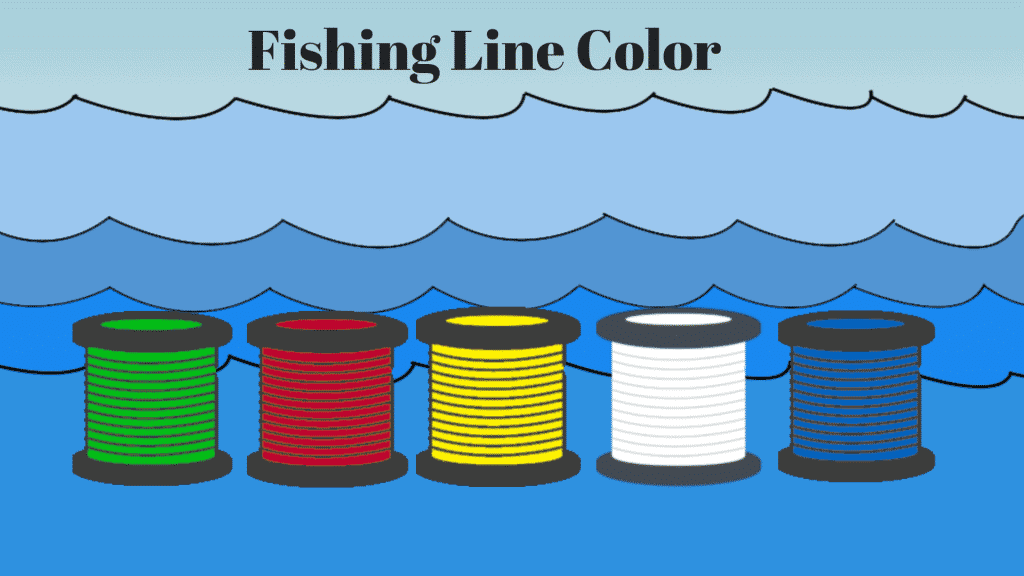You can pick all sorts of different line colors, but which is actually the best choice? Pinks, yellows and all sorts of other crazy colors to choose from. Which color do I use? It’s pretty simple clear is by far the most versatile if you’re just starting out.
Choosing The Right Line Color
Why Choose Clear Fishing Line?
The main reason most people choose clear fishing line is that it’s the most versatile. You can use clear line in just about any situation. Obviously you don’t want the fish to see the line, and clear blends in well in all conditions. If you’re fishing open water you should go with clear line. Even though clear line is the most versatile, that doesn’t mean it should be your only choice.
When Should You Use Colored Lines?
Colored lines come into play when you start working around a lot of cover. Choosing the right color is going to depend on your application. Match the following colors with their intended uses.
Clear Fishing Line
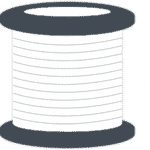
Clear line is one of the most basic colars and as I said above it’s going to be the most versatile. Most people are going to want to stick to generic clear monofilament that they find in any store. Stren’s cheap High Impact Monofilament line is a good place to start.
Clear line is cheap, lasts a long time and can be used almost anywhere. Most people who only bring along one reel are going to want to stick to clear line.
In extremely clear water you might want to go with KastKing’s Fluorocarbon Fishing Line. Above water fluorocarbon line looks like any other monofilament, but underwater it completely disappears. Since it’s nearly invisible it can be used in just about any situation. From muddy pond water to crystal clear resorvoirs fluorocarbon is a great choice. When going after fish that scare easily, crappie comes to mind, fluorocarbon is your top choice.
Green Fishing Line
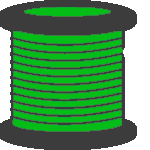
Green line like Berkley’s Trilene Low Vis Monofilament is primarily used around heavy cover and grass. It’s going to be nearly impossible for fish to see along the grassy backdrop. I’ll normally throw on some green line during the bass spawn and take it off when they leave for deeper water.
You should also use green line whenever you start to see an algae bloom. Most bodies of water have a slight green tint, but algae blooms really intensify the color. With a green fishing line it will be nearly invisible underwater.
When the water clears up you’re going to want to avoid green line, because it will be easily spotted by approaching fish. If you notice a lot of nibbles without full on strikes it could be because the water is to clear. I personally use green a lot more than other specialty colors.
Yellow Fishing Line
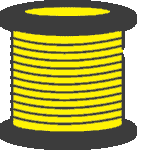
Your entire life you’re taught that fish shouldn’t be able to see the line. So why do people tie on yellow high visibility line? Look at Kastking’s Sunrise Yellow monofilament line, it’s the same color construction crews wear when working near roads and at night. High Vis Greens, Oranges etc are going to work in the same applications.
Yellow line should never be your go to, but it is perfect for muddy water, super thick weeds (high vis monofilament) and offshore saltwater fishing(braided high viz). You can use it whenever you aren’t really worried about fish seeing your bait. Whatever you do never use yellow line on bright and sunny days with clear water.
The coolest thing about high visibility line is that it allows you to see when you have a bite. It’s almost like you have a bobber on the end of your line, you’ll see the line jump. Since fish will obviously see the line, you should add a clear line leader.
Red Fishing Line

Red lines are about as controversial as you can get in the fishing community. Some fisherman claim red line is completely invisible underwater, while others say it’s a scam. A lot of my buddies have had a lot of success fishing with KastKing’s Rebel Red Monofilament Line in shallow saltwater.
The whole idea is that red is the first color in the color spectrum that loses its visibility underwater. As you go deeper underwater and farther from light, it should wash out. The problem is for this theory to work you need to have really deep water.
Inshore saltwater fishing is where red line really shines. Kicked up muddy substrate, sea-grass and off colored water all help the line disappear. Other people think that the red line looks similar to a blood trail behind your baitfish. Honestly I have no idea which of these theories is actually correct.
Blue Fishing Line
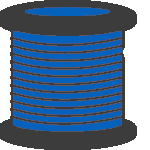
Blue line is going to work in the same way as green fishing line. When water takes on a clean blue appearance you’re going to want to use blue line. It probably seems obvious to
most of you, but that’s why it works.
You probably already know if blue line is going to work for you. Most of the time water is going to take on more of a greenish hue, but their are some places where the water’s actually blue. Stren’s Smoke Blue High Impact Line is a great choice if you don’t want to spend a ton of cash.
High Visibility vs Low Visibility Line
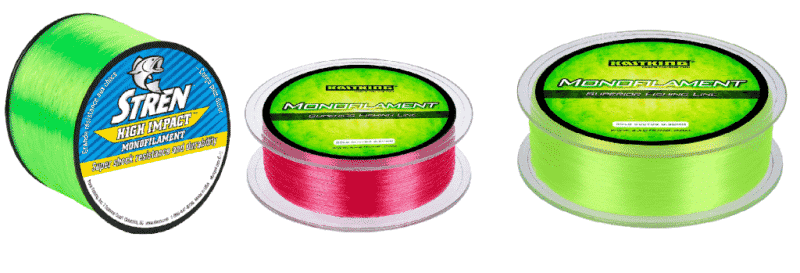
Throughout the past couple years fisherman have really started experimenting with both high and low visibility line. Anglers have been learning new ways to use the lines. It doesn’t matter if you’re on shore or miles on the water you can find some way to use the line.
High Visibility Line Advantages
- Easy to Track: With high viz line anglers are able to follow their lures through the water. As you retrieve you should be able to have a good idea of the location of your lure. This helps a lot when you’re sight fishing.
- Easy to See Twists and Knots: Unlike with traditional line colors(think clear, green etc.) high viz line allows you to quickly see knots and twists. If you’ve ever had to untangle baitcaster backlash you know just how important this can be.
- Tell if You Have a Bite: High Viz line allows you to see your line move. It works kind of like a bobber, line twitch will indicate a bite.
High Visibility Line Disadvantages
- Spooks Fish: Some days you’ll notice your high viz line just isn’t working as well. As fish go higher in the water table, they tend to get more spooked out by bright lines.
- Avoid Bright Days: The brighter the sun is, the more light shines down into the water. On bright days go with clear line or match the water color.
- Avoid Clear Water: High visibility line only works in water that has a bit of discoloration. It works best in dark greens, muddy and saltwater. Clear water is never going to work.
Dealing With Color Bleed
Anybody that’s used braided line knows the horrors of color bleed. That red line that’s been catching fish for months starts to take on a pinkish white appearance. It’s just the way things are, the dye is going to bleed off into the water and fade. Thankfully in recent years manufacturers have been making line that doesn’t fade quite as bad.
Regardless of all the fancy technologies they apply to line the color will eventually wear off. The higher the acid and salt content in the water the faster your braided line will fade. You should get a few 1000 casts out of decently manufactured braided line.
What About Metered and Indicator Lines?
Metered/Indicator Lines are designed to tell you exactly how far your lure sinks into the water. They include different colored lines throughout the spool indicating how much line you’ve let out. Every mark is an equal length apart allowing you to accurately estimate your line depth.
I really like PowerPros Depth Hunter Metered Line. It has four completely different colors that indicate 25 feet increments. Just remember to treat it like any other high visibility line.
Metered line gives you a huge advantage when vertical jigging. You can quickly drop your vertical jig to the bottom and estimate exactly how far you are up the water table.

